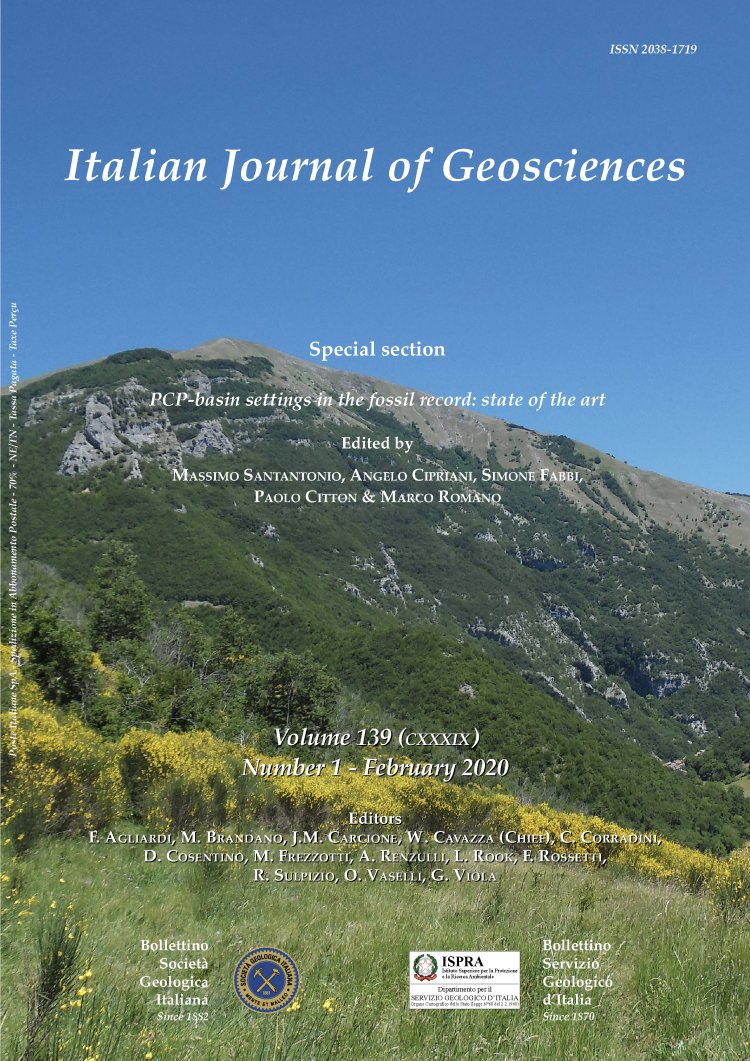
U-Pb ages on detrital zircons and geochemistry of Lula paragneiss from Variscan belt, NE Sardinia, Italy: implications for source rocks and early Paleozoic paleogeography
Gabriele Cruciani (1), Marcello Franceschelli (1), Valeria Caironi (2) & Giovanni Musumeci (3)
(1) Dipartimento di Scienze Chimiche e Geologiche, Università degli Studi di Cagliari, S.S. 554 Cittadella Universitaria, Monserrato (CA), 09042, Italy.
(2) Dipartimento di Scienze della Terra “Ardito Desio” Università degli Studi di Milano, via Botticelli 23, 20133 Milano.
(3) Dipartimento di Scienze della Terra, Università degli Studi di Pisa, Via Santa Maria 53, I-56126, Pisa, Italy.
Corresponding author e-mail: gcrucian@unica.it
DOI: https://doi.org/10.3301/IJG.2019.24
Volume: 139 (2020) f.1
Pages: 131-148
Abstract
Chemical analyses of garnet-bearing metasediments and EMP and U/Pb analyses of detrital zircons of the Lula paragneisses in the Axial Zone of the Variscan belt (NE Sardinia) give significant contribution to the reconstruction of the early Paleozoic evolution of the northern Gondwana margin. The youngest middle Ordovician (465 Ma) age of detrital zircons indicate a derivation from a fore- arc sedimentary basin along an early Paleozoic convergent margin, which collected sediments from nearby emerged lands consisting of early Paleozoic volcanic arcs and pre-Paleozoic sequences. The chemical composition of metasediments is characterized by negative Sr anomaly and depletion in heavy rare earth elements (HREE) and Y as compared to the upper crust. Normalized to chondrite values, the paragneiss shows a steep REE pattern with light-REE enrichment, negative Eu anomaly and flat heavy-REE pattern. All these features suggest a derivation form older active continental margins or island arcs. Detrital zircon ages cover a very large time span (3151 + 97 Ma to 465 + 8 Ma) and reveal a complex history of inheritance and recycling. The oldest ages obtained on relic cores and/or magmatic stages, mostly enriched in Hf (Zr / Hf ratios: 45-24) and devoid of Y, indicate a contribution from granitoid rocks of mainly crustal origin. The ages of detrital zircons highlight a derivation of the sedimentary supply from the Sahara craton and/or the Arabian-Numidian shield along the northeastern margin of Gondwana. This fit well with derivation of early Paleozoic metasedimentary formations in southern Sardinia and northern Apennine, pointing out a common origin and location of these sedimentary basins along the northern margin of Gondwana at the early Paleozoic. As regards the Variscan orogeny, the common middle Ordovician age of Lula paragneiss and nearby Lodé orthogneiss highlight the role of Variscan tectonics in the assembly of different blocks of early-middle Paleozoic margin.
Keywords
Get Full Text